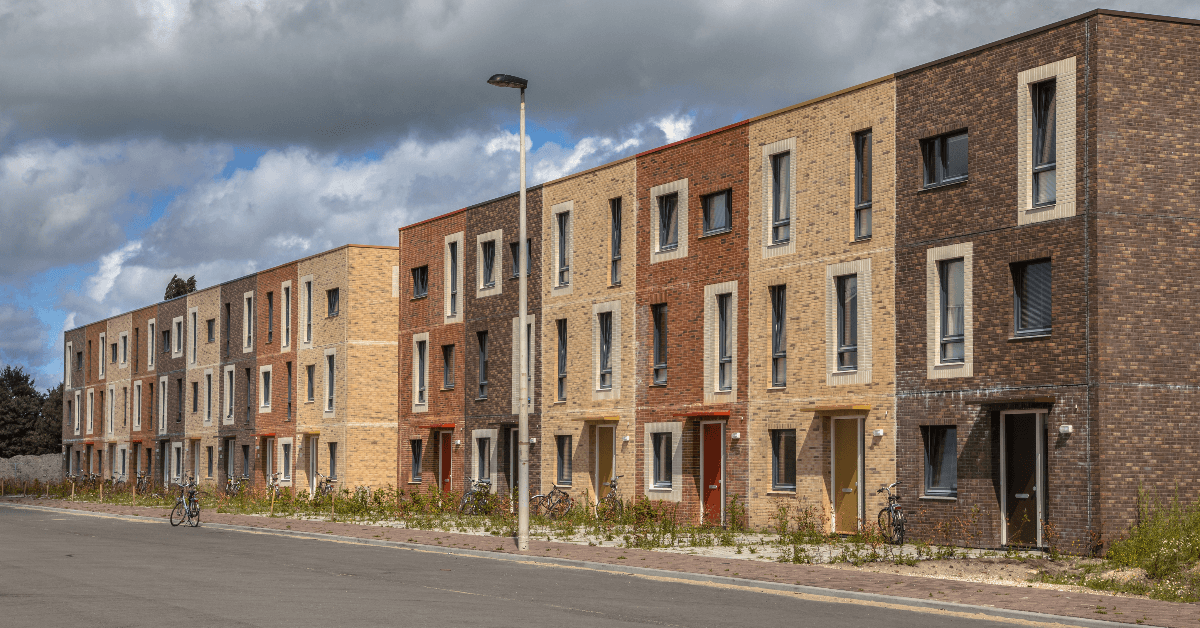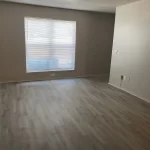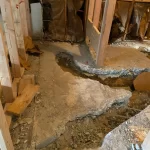In the dynamic landscape of affordable housing and tax credit programs, January 2024 witnesses a flurry of developments, statistics, and promising initiatives to combat the pressing issue of affordable housing in the United States. Here’s an overview of key highlights from the low-income housing tax credit (LIHTC) industry and state housing programs, including Oklahoma and North Carolina:
Federal LIHTC Per-Capita Multiplier Reaches New Heights
In 2024, the 9% federal LIHTC per-capita multiplier is poised to increase by 15 cents, reaching a historic high of $2.90. Following the record-breaking adjustment in 2023, this substantial jump represents a noteworthy trend in the LIHTC landscape. Additionally, the small-state minimum for 9% LIHTCs is set to reach an all-time high of $3,360,000. Concurrently, the private-activity bond per-capita multiplier surges to a record $125, up from $120 in 2023. The PAB small-state minimum has experienced a significant boost, totaling $378,230,000.
FHFA’s Commitment To Affordable Housing
The Federal Housing Finance Agency (FHFA) demonstrates its support for affordable housing by establishing multifamily loan purchase caps of $70 billion each for Fannie Mae and Freddie Mac in 2024, totaling $140 billion. Notably, FHFA emphasizes that at least 50% of Fannie and Freddie’s multifamily business must prioritize mission-driven affordable housing. Loans supporting workforce housing properties are exempt from these volume caps, underscoring the agency’s dedication to fostering an inclusive housing market.
Middle-Income Housing Tax Credit Legislation
Bipartisan legislation has been introduced to create a Middle-Income Housing Tax Credit (MIHTC) mirroring the LIHTC. State housing finance agencies could allocate MIHTC credits to lihtc developers through a competitive process, with allocations based on population. This program aims to subsidize 50% of the cost of new buildings over the credit’s lifetime and provide a 20% credit for rehabilitated and bond-financed buildings. To qualify for the credit, at least 60% of the building’s units must be occupied by individuals with incomes at 100% or less of the area median income (AMI), with rents restricted to 30% of the designated income. Credits will be disbursed over 15 years with a 15-year compliance period, offering a fresh approach to addressing the housing affordability crisis.
Support For The Affordable Housing Credit Improvement Act
The Western Governors Association, representing 22 westernmost governors and territories, expresses bipartisan support for provisions within the proposed Affordable Housing Credit Improvement Act. This endorsement highlights the necessity to expand and strengthen the LIHTC incentive while advocating for lowering the private-activity bond threshold from 50% to 25%, demonstrating a widespread commitment to addressing affordable housing concerns.
State-Level Developments
Numerous states are proactively addressing their affordable housing needs. In Missouri, 24 developments have received $380 million in state and federal LIHTCs, with expectations to create or rehabilitate over 1,500 apartments. Indiana has announced over $300 million in LIHTC awards to construct or rehabilitate 872 affordable apartments. Colorado has also announced LIHTC awards for 10 properties, with the most prominent development receiving $43 million in federal 4% credits and state LIHTCs. Florida awarded $540 million in LIHTCs to 22 properties, with plans to construct nearly 2,000 apartments across 18 counties. These initiatives underscore the commitment of individual states, including Oklahoma and North Carolina, to address housing affordability within their jurisdictions.
Investments And Initiatives
Investment firms and organizations are actively participating in the affordable housing sector. Enterprise Community Partners has closed over $444 million in LIHTC funds, with 19 investors contributing to the effort, which is expected to create and preserve more than 3,500 affordable apartments across multiple states. Boston Financial has announced a $164 million LIHTC fund to create and preserve 1,357 apartments in 22 properties across 10 states. Hunt Capital Partners has closed on a $135 million LIHTC fund, targeting developing or preserving over 1,000 apartments in various states.
Groundbreaking Developments
Construction and development are in full swing in various parts of the country. Catchlight Crossings, a 1,000-apartment property in Orlando, Florida, commenced construction on a 20-acre site, with 75% of the homes designated as affordable apartments, demonstrating the tangible impact of LIHTCs in creating inclusive communities. Dominium’s acquisition of land for 200 affordable apartments in Marana, Arizona, is part of a larger $1 billion development plan in the state, reaffirming the commitment to affordable housing at scale.
Support For Vulnerable Populations
Efforts to provide support to vulnerable populations are underway. Clarkson Estates in Brooklyn, New York, is being developed to include 164 apartments for those who have experienced homelessness, with substantial investments from Goldman Sachs in federal LIHTCs. The Three Sisters, a 70-apartment property in Las Cruces, New Mexico, is specifically designed for families earning up to 30%, 50%, or 60% of the area median income, with significant LIHTC equity from the Richmond Group.
Revitalization And Rehabilitation
MassHousing is providing $7.5 million in loan financing for acquiring and rehabilitating Prospect Estates in Webster, Massachusetts, showcasing the synergy between federal and state LIHTCs and historic tax credits in preserving and enhancing affordable housing options.
Expanding Housing Options
Merchants Capital’s support for the refinancing and rehabilitating seven properties in The Bronx, New York City, highlights the potential of private investments in expanding affordable housing choices. Additionally, Monarch Private Capital’s equity investment in Willoughby Corner Family Apartments in Lafayette, Colorado, exemplifies the drive to offer affordable housing to diverse income groups.
Supporting Supportive Housing
Covent Apartments in Chicago, a permanent supportive housing project, underscores the importance of affordable housing for those with specialized needs, with investments from R4 Capital in LIHTCs and HTCs.
Senior-Focused Affordable Housing
Haven Crossing, a senior property in Walton, Kentucky, offers housing options to those aged 55 and older, focusing on various income levels, supported by investments from Marble Cliff Capital in LIHTCs.
Hawaii’s Commitment To Affordable Housing
Hale O Pi‘ikea in Kihei, Maui, Hawaii, broke ground on 223 apartments, demonstrating Hawaii’s commitment to addressing its unique housing challenges through a combination of 4% and 9% LIHTCs.
New Talent And Leadership
The Ohio Housing Finance Agency (OHFA) welcomed new staff additions and promoted Cody Price to 9% low-income housing tax credit chief, highlighting the continuous growth and development within the industry. Additionally, companies such as Lawson, Conifer, and Dominium have expanded their leadership teams to enhance their ability to tackle affordable housing challenges effectively.
LIHTC Bond Initiatives
Several LIHTC bond initiatives have been launched, further amplifying the impact of tax credits in creating affordable housing options. Notable developments include the 2050 Grand Concourse in The Bronx and Carol Avenue Apartments in Brighton, Massachusetts.
Conclusion
In conclusion, January 2024 marks a pivotal moment in the realm of affordable housing and tax credit programs across the United States, with many significant advancements and promising initiatives taking center stage in the battle against housing affordability challenges.
Key highlights include the remarkable increases in the federal Low-Income Housing Tax Credit (LIHTC) per-capita multiplier, new records, and a positive trend in the LIHTC landscape. Moreover, the Federal Housing Finance Agency (FHFA) has demonstrated its unwavering commitment to affordable housing, emphasizing the need for Fannie Mae and Freddie Mac to prioritize mission-driven affordable housing in their multi-family businesses.
Bipartisan legislation introduces the Middle-Income Housing Tax Credit (MIHTC), mirroring the LIHTC, offering innovative solutions to subsidize building costs and ensure affordable housing options are accessible to a broader demographic. This legislation is a crucial step in addressing the ongoing housing affordability crisis.
Noteworthy state-level developments in various states, including Oklahoma and North Carolina, underscore the commitment of individual states to address housing affordability challenges head-on with substantial investments in affordable housing projects.
Investment firms and organizations have also played a pivotal role, channeling significant financial resources into the affordable housing sector, furthering the goal of creating and preserving affordable homes nationwide.
The dynamic landscape also witnesses groundbreaking developments, support for vulnerable populations, revitalization efforts, and the expansion of diverse housing options, all contributing to a holistic approach to housing affordability.
As we look ahead, it is evident that the collective dedication to affordable housing and tax credit programs remains strong, offering hope for a future where housing is more accessible and inclusive for all Americans.










